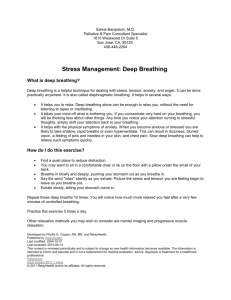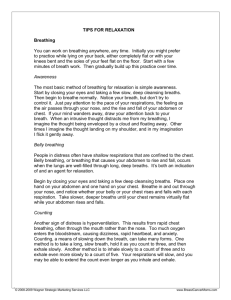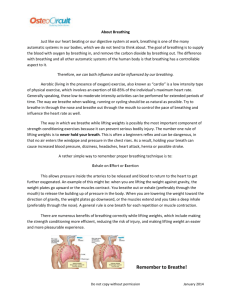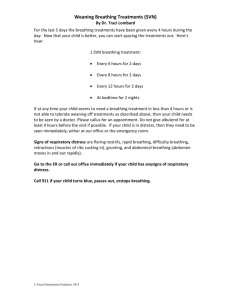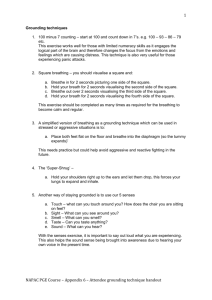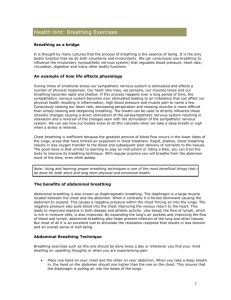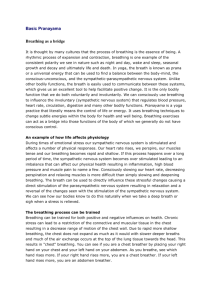(How to) Take a Breather!
advertisement
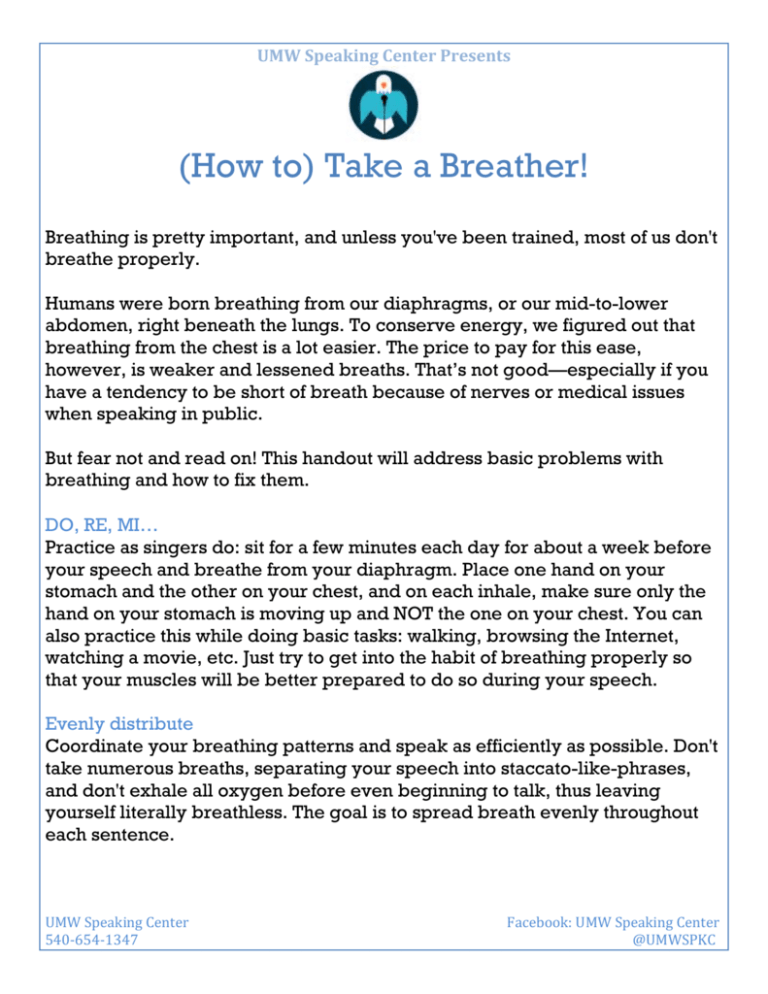
UMW Speaking Center Presents (How to) Take a Breather! Breathing is pretty important, and unless you've been trained, most of us don't breathe properly. Humans were born breathing from our diaphragms, or our mid-to-lower abdomen, right beneath the lungs. To conserve energy, we figured out that breathing from the chest is a lot easier. The price to pay for this ease, however, is weaker and lessened breaths. That’s not good—especially if you have a tendency to be short of breath because of nerves or medical issues when speaking in public. But fear not and read on! This handout will address basic problems with breathing and how to fix them. DO, RE, MI… Practice as singers do: sit for a few minutes each day for about a week before your speech and breathe from your diaphragm. Place one hand on your stomach and the other on your chest, and on each inhale, make sure only the hand on your stomach is moving up and NOT the one on your chest. You can also practice this while doing basic tasks: walking, browsing the Internet, watching a movie, etc. Just try to get into the habit of breathing properly so that your muscles will be better prepared to do so during your speech. Evenly distribute Coordinate your breathing patterns and speak as efficiently as possible. Don't take numerous breaths, separating your speech into staccato-like-phrases, and don't exhale all oxygen before even beginning to talk, thus leaving yourself literally breathless. The goal is to spread breath evenly throughout each sentence. UMW Speaking Center 540-654-1347 Facebook: UMW Speaking Center @UMWSPKC Try beginning to speak when you start to exhale. You want to spread your breath efficiently over the phrases. Use the following sentences that increase in length for practice: “Hello.” “Hello, I’m here.” “Hello, I’m here and breathing.” “Hello, I’m here and breathing correctly.” Practice breathing and speaking This sounds silly, but practice breathing and speaking. Write up your speech, print it out, and then mark it where you'd naturally pause in conversation. Then, stand in front of a mirror, a friend, or a camera, and record yourself or practice reciting the words with appropriate pauses and breaths, taking more breaths for longer phrases while balancing exhales and inhales. With time-daily practice at least a week before your speech--you'll get the hang of timing and find your oxygen comfort zone. Practice reading this paragraph aloud, inhaling at every slash: Congratulations./ You’ve achieved control over your breathing./ You don’t waste air/ and you don’t hold air in./ At first it will feel strange./ Then, with practice,/ coordination will be more natural./ Good luck!/ You’re on the right track! Adapted in part from Laurie Schloff and Marcia Yudkin. Smart Speaking: Sixty-Second Strategies, 1991. UMW Speaking Center 540-654-1347 Facebook: UMW Speaking Center @UMWSPKC

